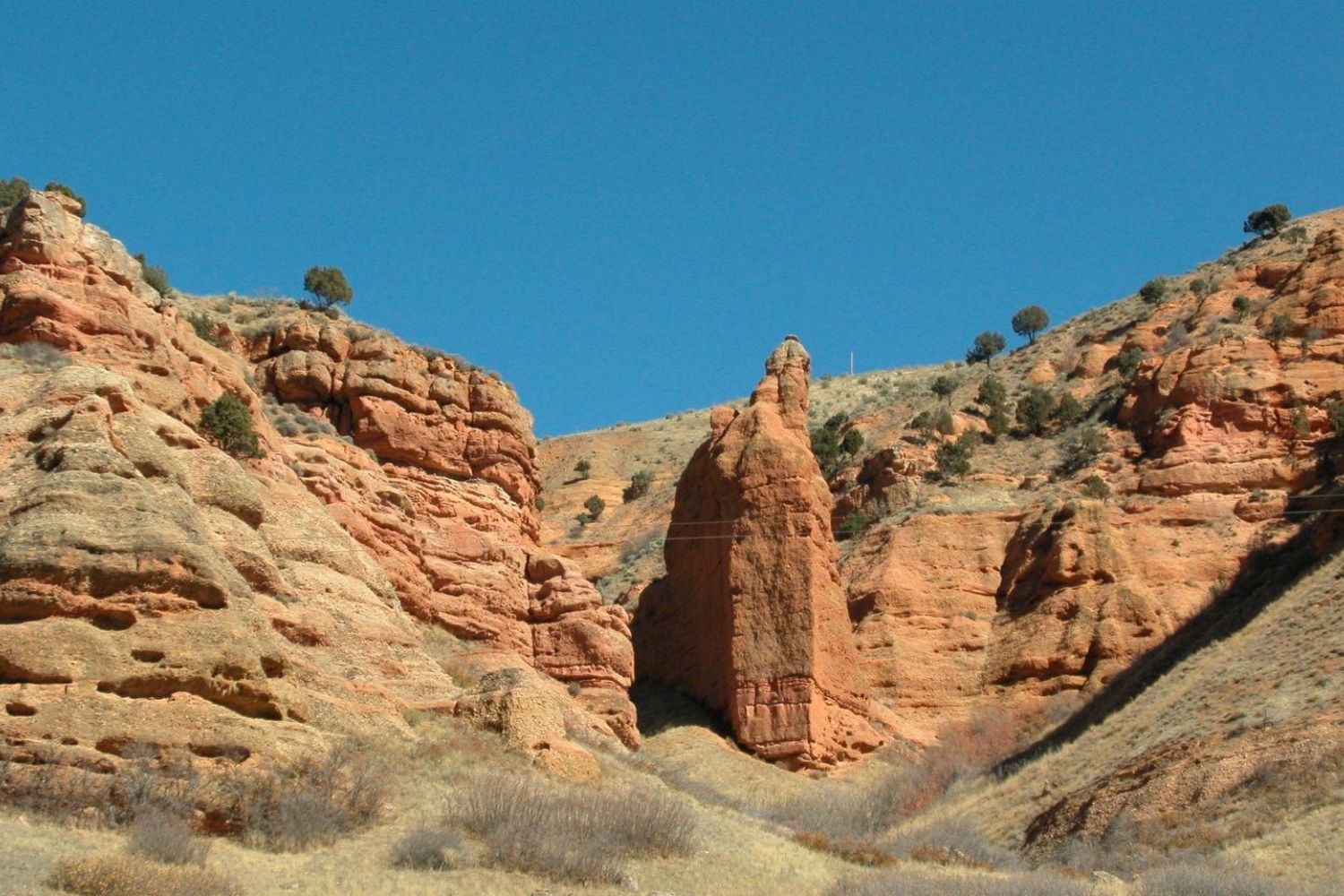Mysterious Pioneer Crossings On Nebraska’s Mormon Trail

Have you ever wondered what it was like for pioneers traveling the Mormon Trail in Nebraska? This historic route, stretching over 1,300 miles, was a lifeline for thousands of settlers seeking a new beginning in the West. Imagine walking alongside covered wagons, crossing rivers, and enduring harsh weather. The Mormon Trail isn't just a path; it's a journey through time, filled with stories of courage, faith, and determination. Today, you can still trace their steps, visiting landmarks and learning about the challenges they faced. Ready to step back in time and experience the Mormon Trail for yourself?
Mysterious Pioneer Crossings on Nebraska's Mormon Trail
Nebraska's Mormon Trail is steeped in history and mystery. Pioneers traversed this path in search of a new beginning, leaving behind tales of courage, hardship, and the unknown. Let's explore some of the most intriguing spots along this historic route.
Chimney Rock
Chimney Rock stands as an iconic landmark for pioneers. This natural rock formation, resembling a chimney, guided travelers westward. Its towering presence sparked many legends and stories among those who passed by.
- Chimney Rock National Historic Site: This site offers a visitor center with exhibits detailing the history and significance of Chimney Rock. It's a great place to start your journey along the Mormon Trail.
Scotts Bluff
Scotts Bluff served as a major landmark for pioneers. Its massive cliffs provided a sense of direction and a place to rest. The bluffs hold many secrets of the past, waiting to be uncovered.
- Scotts Bluff National Monument: Here, you can hike to the top of the bluff for a panoramic view of the surrounding plains. The visitor center provides insights into the lives of the pioneers who traveled the trail.
Fort Kearny
Fort Kearny was a crucial stop for pioneers. It offered supplies, protection, and a place to regroup. The fort's history is filled with tales of survival and camaraderie.
- Fort Kearny State Historical Park: This park preserves the remains of the original fort. Visitors can explore reconstructed buildings and learn about the fort's role in the westward expansion.
Ash Hollow
Ash Hollow was a welcome sight for weary travelers. Its lush valley provided water and shelter. The area is rich in archaeological finds, revealing much about the lives of those who passed through.
- Ash Hollow State Historical Park: This park features a visitor center with exhibits on the natural and cultural history of the area. Trails lead to significant archaeological sites and scenic viewpoints.
Courthouse and Jail Rocks
These twin rock formations were another key landmark. Their unique shapes made them easily recognizable and provided a sense of progress for travelers.
- Courthouse and Jail Rocks: Visitors can hike around these formations and imagine what it was like for pioneers to see them on the horizon. Interpretive signs provide historical context.
Windlass Hill
Windlass Hill presented a challenging descent for wagons. The steep slope tested the skills and endurance of the pioneers. The hill's name comes from the windlass devices used to help lower wagons safely.
- Windlass Hill Overlook: This overlook offers a view of the hill and the surrounding landscape. Interpretive panels explain the difficulties pioneers faced when navigating this part of the trail.
Rock Creek Station
Rock Creek Station was a vital stop for rest and resupply. It also became infamous for a violent altercation involving Wild Bill Hickok, adding to its mystique.
- Rock Creek Station State Historical Park: This park includes reconstructed buildings and exhibits on the station's history. Trails lead to the site of the famous gunfight and other points of interest.
The Platte River
The Platte River was a lifeline for pioneers. Its waters provided much-needed hydration and a route to follow. The river's banks hold many stories of the journey west.
- Platte River Road Archway Monument: This monument spans Interstate 80 and offers a museum experience that tells the story of the pioneers, including those on the Mormon Trail. Interactive exhibits bring the history to life.
Conclusion
Nebraska's Mormon Trail is more than just a path; it's a journey through history. Each landmark tells a story of the pioneers' courage, determination, and the mysteries they encountered. Whether you're a history buff or an adventurer, these sites offer a glimpse into the past that shaped the American West.
The Enduring Legacy of Nebraska's Mormon Trail
Nebraska's Mormon Trail holds a rich history of pioneer crossings. This path tells stories of courage, faith, and determination. Travelers today can still see landmarks like Chimney Rock and Scotts Bluff, which guided the pioneers. Visiting these sites offers a glimpse into the past and a chance to appreciate the hardships faced by those who traveled before us. The trail is not just a route; it's a testament to human spirit and resilience. Exploring it connects us to a significant chapter in American history. Whether you're a history buff or just curious, the Mormon Trail in Nebraska is worth the visit. It reminds us of the journeys that shaped our nation and the enduring legacy of those who dared to venture into the unknown.

